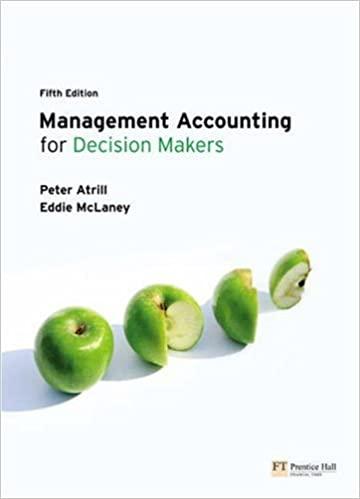Goliath plc is a retail business operating in Ireland. The most recent financial statements of the business
Question:
Goliath plc is a retail business operating in Ireland. The most recent financial statements of the business are as follows: Income statement for the year to 31 May 000 000 Sales revenue 2,400.0 Less Cost of sales Opening inventories 550.0 Add Purchases 1,450.0 2,000.0 Less Closing inventories 560.0 1,440.0 Gross profit 960.0 Administration expenses (300.0) Selling expenses (436.0) Interest payable (40.0) (776.0) Net profit before taxation 184.0 Less Corporation tax (25%) 46.0 Net profit after taxation 138.0 Balance sheet as at 31 May 000 Non-current assets Machinery and equipment at cost Less Accumulated depreciation Motor vehicles at cost Less Accumulated depreciation 000 000 424.4 140.8 283.6 308.4 135.6 172.8 456.4 Current assets Inventories at cost 560.0 Trade receivables 565.0 Cash at bank 36.4 1,161.4 Current liabilities Trade payables (451.0)
Corporation tax due (46.0) (497.0) 664.4 1,120.8 Non-current liabilities Loan capital (400.0)
720.8 Equity £1 ordinary shares 200.0 Retained profit 520.8 720.8 11.8 EXERCISES 423 All sales and purchases are made on credit.
The business is considering whether to grant extended credit facilities to its customers. It has been estimated that increasing the settlement period for receivables by a further 20 days will increase the sales revenue of the business by 10 per cent. However, inventories will have to be increased by 15 per cent to cope with the increased demand. It is estimated that purchases will have to rise to £1,668,000 during the next year as a result of these changes. To finance the increase in inventories and receivables, the business will increase the settlement period taken for suppliers by 15 days and utilise a loan facility bearing a 10 per cent rate of interest for the remaining balance.
If the policy is implemented, bad debts are likely to increase by £120,000 and administration costs will rise by 15 per cent.
Required:
(a) Calculate the increase or decrease to each of the following that will occur in the forthcoming year if the proposed policy is implemented:
(i) operating cash cycle (based on year-end figures)
(ii) net investment in inventories, receivables and payables (iii) net profit after taxation.
(b) Should the business implement the proposed policy? Give reasons for your conclusion.AppendixLO1
Step by Step Answer:

Management Accounting For Decision Makers
ISBN: 9780273710448
5th Edition
Authors: Peter Atrill, E. J McLaney





